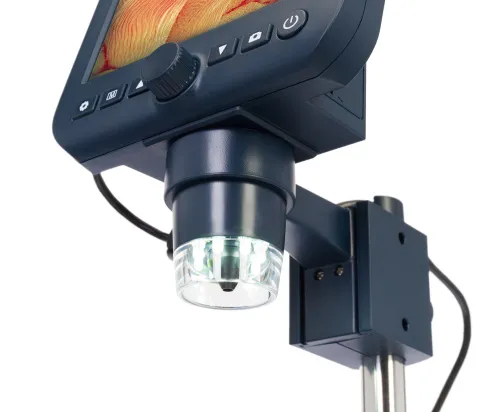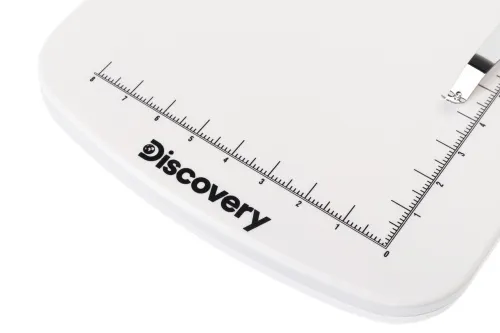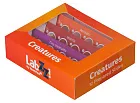Levenhuk Discovery Artisan 64 Digital microscope
USB microscope for applied works. 4.3
| Product ID | 78161 |
| Brand | Discovery |
| Warranty | 10 years |
| EAN | 5905555012025 |
| Package size (LxWxH) | 21x16x12 cm |
| Shipping Weight | 0.7 kg |

Discovery Channel informs, entertains and inspires its audiences around the globe about the world in all its wonder, diversity and amazement. Offering millions of people the chance to discover, and satisfy their curiosity, Discovery offers a compelling mix of stories across genres including science and technology, exploration, adventure, history and in depth behind-the-scenes glimpses at the people, places and organisations that shape and share the world we live in.
We proudly present the Discovery optics series that is produced by Levenhuk and endorsed by Discovery.
The Levenhuk Discovery Artisan 64 digital microscope is easy to use as it features a built-in LCD screen. Due to this feature, the microscope is not necessary to connect to a PC, but it can also be used with a computer as it is compatible with Windows and Mac OS (connection via a USB cable). The microscope has a wide field of application: repair of small equipment, soldering microcircuits, studying metals, sharpening knife blades, checking the authenticity of old coins, restoring objects of art, and much more. It features the upper illumination, you can only study opaque objects with this device.
Magnification is adjustable, it varies from 20x to 300x. Focusing is done manually in the range from 5 to 80 mm. The microscope has 8 white LED lights around the camera's objective. The camera is used as an objective, it renders the image. Its 0.3Mpx sensor (with interpolation up to 2Mpx) renders a sharp and detailed image of the observed samples, you can observe it in a real-time mode and, if necessary, save photos and videos to a memory card (included). The special software (included) enables measuring the angular and linear sizes of samples.
The microscope is mounted on a professional stand that has a stage with measuring scales and clips. The microscope operates from a built-in battery that can be charged via a USB cable.
Features:
- Magnification: 20–300x; focus: 5–80mm
- 0.3MP camera with interpolation up to 2Mpx
- 4.3" LCD screen
- Photo, video recording, and object measurement functions
- 8 white LEDs with adjustable brightness
- Professional stand and a stage with measuring scales and clips
- Powered with a built-in battery or via a computer USB port
- Compatible with Windows and Mac OS; microSD support
The kit includes:
- Digital microscope
- Stand
- USB cable
- MicroSD 1GB
- Software CD
- User manual and warranty card
Recommendations on using the software:
In order for the program to operate correctly, please launch the installed application only when your microscope is connected to a PC and ready for observations.
Note: Remember that mains voltage in the U.S. and Canada is 110V and 220-240V in most European countries. Please refer to the specifications table for the correct voltage and never attempt to plug a 110V device into a 220V outlet and vice versa without using a converter.
The Levenhuk Discovery Artisan 64 digital microscope is not compatible with external digital cameras.
| Product ID | 78161 |
| Brand | Discovery |
| Warranty | 10 years |
| EAN | 5905555012025 |
| Package size (LxWxH) | 21x16x12 cm |
| Shipping Weight | 0.7 kg |
| Type | digital |
| Microscope head type | digital screen/PC monitor |
| Optics material | optical glass |
| Head | 4.3'' color LCD screen (fixed) |
| Magnification, x | 20 — 300 |
| Stage, mm | 120x165 |
| Stage moving range, mm | fixed |
| Stage features | with a measuring scale, with clips |
| Focus | manual, 5–80mm |
| Body | plastic |
| Illumination | LED |
| Brightness adjustment | ✓ |
| Power supply | 5V via USB cable 2.0 |
| Operating temperature range, °C | 0...+45 |
| Ability to connect additional equipment | connecting to computer via 2.0 USB port, supports microSD memory cards up to 32GB |
| User level | beginners |
| Assembly and installation difficulty level | extremely simple |
| Software language | Chinese, Dutch, English, French, German, Italian, Japanese, Korean, Polish, Portuguese, Russian, Spanish |
| Application | for applied research |
| Illumination location | upper |
| Research method | bright field |
| Megapixels | 0.3 (interpolated to 2M, 1M, VGA) |
| Video recording | yes |
| Image format | *.jpg |
| Video format | *.avi |
| Frame rate | 30 frames per second |
| Software, drivers | photo and video capture and processing software with measurement function |
| Output | microSD card slot, power cable slot |
| System requirements | Windows 7/8/10/11, Mac 10.12 and later, minimum P4 1.8GHz, 512MB RAM, 64MB video card, USB 2.0 port, CD-ROM |
We have gathered answers to the most frequently asked questions to help you sort things out
Find out why studying eyes under a microscope is entertaining; how insects’ and arachnids’ eyes differ and what the best way is to observe such an interesting specimen
Read this review to learn how to observe human hair, what different hair looks like under a microscope and what magnification is required for observations
Learn what a numerical aperture is and how to choose a suitable objective lens for your microscope here
Learn what a spider looks like under microscope, when the best time is to take photos of it, how to study it properly at magnification and more interesting facts about observing insects and arachnids
This review for beginner explorers of the micro world introduces you to the optical, illuminating and mechanical parts of a microscope and their functions
Short article about Paramecium caudatum - a microorganism that is interesting to observe through any microscope
Having thought of you and your loved ones, Levenhuk and Discovery have rounded up several desirable gifts for this Christmas
Playlist with reviews of telescopes, binoculars, monoculars, microscopes, planetaria, meteorological stations and other Levenhuk Discovery optical equipment
Eager to learn and explore everything around you? If so, consider treating yourself with new optical instruments to get one step closer to the myriad of unexplored wonders of nature that are all around us every day.
Thnaks
Mike
thanks for your request.
Could you specify where and when you bought this microscope?
Can you send us the invoice please?
I was really exited to recive my Microscop, but I have now been trying it out for a week or so and I stille can get a magnefication higher than *120 and my box is promising *600. I would like to know what I have to do in order to reach the promised magnefication.
thanks for your query.
It is very simple to check the microscope’s maximum magnification (this applies to all digital microscopes), you can use the following formula:
Divide the width of the monitor by the minimum FOV (the angular space that the human eye sees when the head is still and the gaze is fixed) to find the lowest level of magnification possible. Then divide the monitor width by the maximum FOV to find the maximum magnification possible.
Please let me know if you have any questions.















